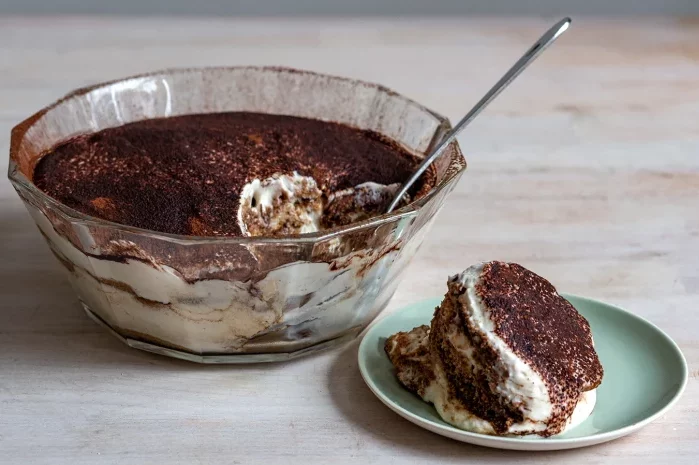When cooking or baking, ingredient substitutions often feel like a gamble. Will the dish turn out as intended? What happens if the swap alters the texture or flavor? One common question that arises in kitchens is whether cream cheese can replace heavy cream. This article explores the culinary and psychological aspects of this substitution, providing insights into how ingredient swaps affect both recipes and the mind.
Understanding Cream Cheese and Heavy Cream
To determine whether cream cheese can stand in for heavy cream, we must first understand their properties.
Composition and Texture
Heavy cream, also known as heavy whipping cream, contains at least 36% milk fat. Its high fat content gives it a rich, velvety texture, making it ideal for whipping, thickening sauces, or adding richness to soups and desserts.
Cream cheese, on the other hand, is a fresh cheese made from milk and cream. It contains about 33% milk fat but has a denser, spreadable consistency due to the addition of lactic acid, which coagulates the proteins. This gives cream cheese a tangy flavor and thick texture, distinct from the neutral taste of heavy cream.
Culinary Roles
Heavy cream is a versatile liquid ingredient. It adds moisture, fat, and structure to dishes. When whipped, it incorporates air to create lightness. Cream cheese serves as a thickener or stabilizer in recipes like cheesecake or frosting. Its density makes it less suitable for applications requiring fluidity.
The Science of Substitution
Replacing heavy cream with cream cheese isn’t a straightforward swap. Let’s break down the technical challenges.
Fat Content and Moisture Balance
While both ingredients are high in fat, heavy cream’s liquid form contributes moisture to recipes. Cream cheese, being solid, lacks this liquidity. Substituting it in a sauce or soup may result in a thicker, heavier consistency unless additional liquid (like milk or broth) is added.
Flavor Profile Adjustments
Cream cheese’s tanginess can alter the flavor of a dish. In savory recipes, this might enhance complexity, but in desserts, it could clash with sweet or delicate flavors. Psychological research shows that unexpected flavor shifts can trigger discomfort, as humans prefer predictability in food.
Structural Impact in Baking
In baked goods, heavy cream provides fat and liquid to activate gluten or leavening agents. Cream cheese’s density might inhibit rising, leading to denser cakes or breads. A study in food psychology notes that texture deviations can subconsciously affect satisfaction, even if the flavor is acceptable.
Psychological Factors in Ingredient Substitution
Why do home cooks experiment with substitutions? Understanding the psychology behind this can improve your approach to recipe tweaks.
Cognitive Flexibility and Creativity
Substituting ingredients requires cognitive flexibility—the mental ability to adapt to new rules. Psychologists link this trait to creativity and problem-solving. When a cook replaces heavy cream with cream cheese, they’re engaging in a form of culinary improvisation, which can boost confidence and innovation.
Risk Perception and Emotional Response
Humans are wired to weigh risks versus rewards. Using an unfamiliar substitute introduces uncertainty, which can trigger anxiety. However, successful substitutions create a sense of accomplishment. This duality explains why some cooks embrace experimentation, while others strictly follow recipes.
The Role of Familiarity and Comfort
Food is deeply tied to memory and emotion. Heavy cream often appears in comfort foods like mashed potatoes or custards. Substituting it with cream cheese might disrupt the nostalgic connection, reducing the emotional satisfaction of the dish.
Practical Applications
While heavy cream and cream cheese aren’t perfect replacements, certain scenarios allow for successful swaps.
Savory Sauces and Soups
In creamy pasta sauces or soups, blending cream cheese with broth or milk can mimic heavy cream’s richness. The tanginess of cream cheese adds depth to dishes like Alfredo or potato soup. For best results, melt the cream cheese slowly and whisk thoroughly to avoid lumps.
Baking and Desserts
Cream cheese works well in dense desserts like brownies or frostings. However, avoid using it in recipes requiring whipped cream (e.g., mousse). A blended mixture of cream cheese and milk can sometimes replace heavy cream in custards, but expect a thicker, tangier result.
Dietary Adjustments
For lactose-sensitive individuals, cream cheese (lower in lactose than heavy cream) might be a safer option. However, always check nutritional labels and consult dietary guidelines.
Case Studies
To illustrate the substitution process, let’s examine real-world examples.
Case Study
A home cook replaced heavy cream with cream cheese in tomato soup. By thinning the cream cheese with vegetable stock and blending aggressively, they achieved a silky texture. The tanginess balanced the soup’s acidity, creating a hit with their family.
Case Study
Another cook attempted to substitute heavy cream with cream cheese in a chocolate cake. The result was a dense, dry texture, as the cream cheese couldn’t provide the necessary moisture. This aligns with food psychology findings—texture failures often overshadow flavor successes.
Tips for Successful Substitution
If you decide to use cream cheese instead of heavy cream, follow these guidelines.
Adjust Liquids Gradually
Start by substituting half the heavy cream with cream cheese, and add liquid (milk, water, or broth) until the desired consistency is reached. This prevents over-thickening.
Balance Flavors
Counteract cream cheese’s tang with sweet or savory ingredients. For example, add honey to dessert fillings or garlic to savory sauces.
Accept Imperfection
Not every substitution will work. Embrace the trial-and-error process as a learning opportunity. Psychologists suggest that reframing “failures” as experiments reduces frustration and encourages growth.
Conclusion
Cream cheese can sometimes replace heavy cream, but success depends on the recipe and your willingness to adapt. From a psychological perspective, experimenting with substitutions fosters creativity and resilience, even when results vary. By understanding the science behind ingredients and the mind’s response to change, you can approach culinary challenges with confidence and curiosity.
Whether you’re driven by dietary needs, curiosity, or necessity, remember that cooking is as much about the journey as the outcome. Happy experimenting!
Related topics:
How to Prepare Tiramisu: A Detailed Guide
























